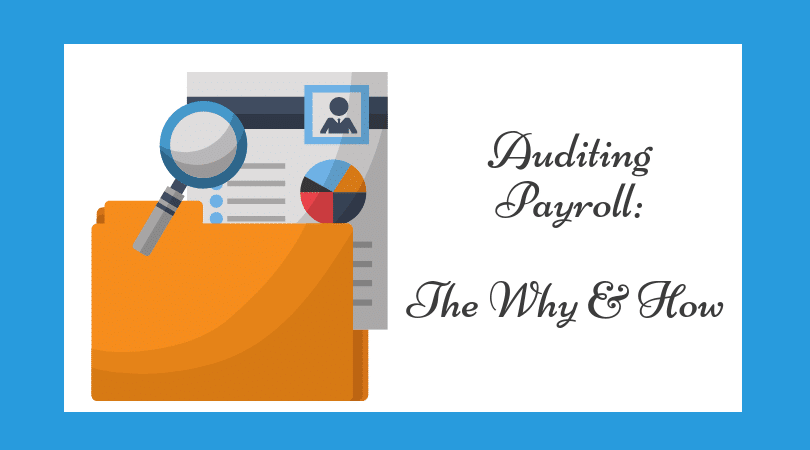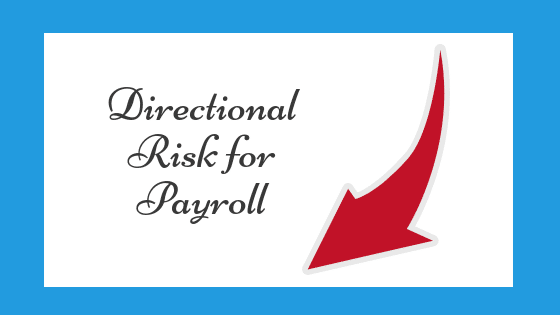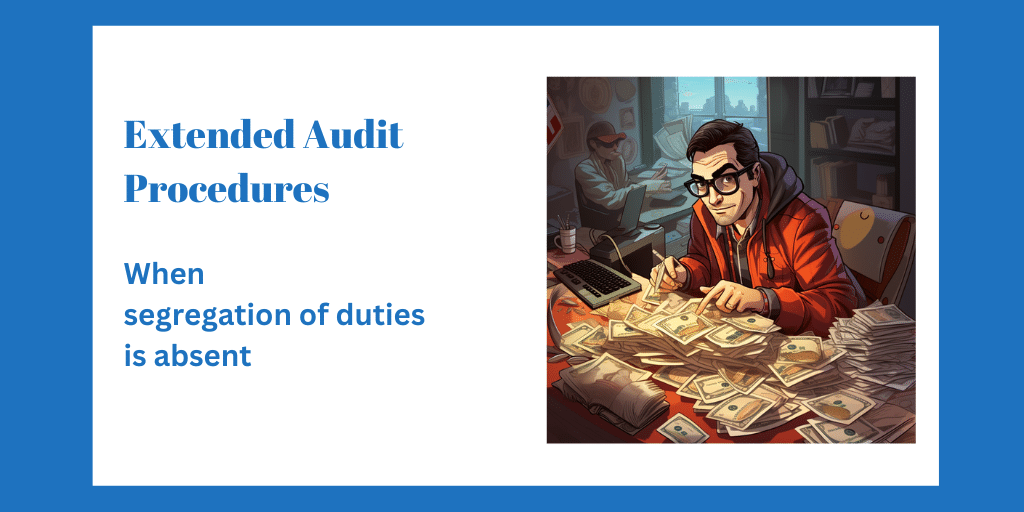
Auditing Payroll: A Step by Step Guide
By Charles Hall | Auditing
Auditing payroll is a critical skill. Today I explain how.
While payroll is often seen as a low-risk area, considerable losses can occur here. So, knowing how to audit payroll is important.
Auditing Payroll – An Overview
Payroll exceeds fifty percent of total expenses in many governments, nonprofits, and small businesses. Therefore, it is often a significant transaction area.
To assist you in understanding how to audit payroll, let me provide you with an overview of a typical payroll process.
First, understand that entities have payroll cycles (e.g., two weeks starting on Monday). Then, payments are made at the end of this period (e.g., the Tuesday after the two-week period). Also, understand that most organizations have salaried and hourly employees. Salaried personnel are paid a standard amount each payroll, and hourly employees earn their wages based on time.
Second, an authorized person (e.g., department head) hires a new employee at a specified rate (e.g., $80,000 per year).
Third, human resources assists the new-hire with the completion of payroll forms, including tax forms and elections to purchase additional benefits such as life insurance.
Fourth, a payroll department employee enters the approved wage in the accounting system. The employee’s bank account number is entered into the system (if direct deposit is used).
Fifth, employees clock in and out so that time can be recorded.
Sixth, once the payroll period is complete, a person (e.g., department supervisor) reviews and approves the recorded time.
Seventh, a second person (e.g., payroll supervisor) approves the overall payroll.
Eighth, the payroll department processes payments. Direct deposit payments are made (and everyone is happy).
In this article, we will cover the following:
- Primary payroll assertions
- Payroll walkthroughs
- Payroll fraud
- Payroll mistakes
- Directional risk for payroll
- Primary risks for payroll
- Common payroll control deficiencies
- Risk of material misstatement for payroll
- Substantive procedures for payroll
- Common payroll work papers
Primary Payroll Assertions
The primary relevant payroll assertions are:
- Completeness
- Cutoff
- Occurrence
I believe—in general—completeness and cutoff (for accrued payroll liabilities) and occurrence (for payroll expenses) are the most important payroll assertions. When a company accrues payroll liabilities at period-end, it is asserting that they are complete and that they are recorded in the right period. Additionally, the company is saying that recorded payroll expenses are legitimate.
Additionally, payroll auditing requires an understanding of threats in light of these assertions. So how do I gain this knowledge? Payroll walkthroughs.
Payroll Walkthroughs

Perform a walkthrough of payroll to see if there are any control weaknesses. How? Walk transactions from the beginning (the hiring of an employee) to the end (a payroll payment and posting). And ask questions such as the following:
- Does the company have a separate payroll bank account?
- How often is payroll processed? What time period does the payroll cover? On what day is payroll paid?
- Who has the authority to hire and fire employees?
- What paperwork is required for a new employee? For a terminated employee?
- Is payroll budgeted?
- Who monitors the budget to actual reports? How often?
- Who controls payroll check stock? Where is it stored? Is it secure?
- If the company uses direct deposit, who keys the bank account numbers into the payroll system? Who can change those numbers?
- Do larger salary payments require multiple approvals?
- Who approves overtime payments?
- Who monitors compliance with payroll laws and regulations?
- Who processes payroll and how?
- Who signs checks or makes electronic payments? If physical checks are used, are they signed electronically (as checks are printed) or physically?
- How are payroll tax payments made? How often? Who makes them?
- Who creates the year-end payroll tax documents (e.g., W-2s) and how?
- What controls ensure the recording of payroll in the appropriate period?
- Are the following duties assigned to different persons:
- Approval of each payroll,
- Processing and recording payroll,
- The reconciliation of related bank statements
- Possession of processed payroll checks
- Ability to enter or change employee bank account numbers
- Ability to add employees to the payroll system or to remove them
- Who can add or remove employees from the payroll system? What is the process for adding and removing employees from the payroll system?
- Who can change the master pay rate file? Does the computer system provide an audit trail of those changes?
- Who approves salary rates and how?
- Who reconciles the payroll bank statements and how often?
- Who approves bonuses?
- What benefits (e.g., retirement accounts) does the company offer? Who pays for the benefits (e.g., employee) and how (e.g., payroll withholding)?
- Who reconciles the payroll withholding accounts and how often?
- Are any salaries capitalized rather than expensed? If yes, how and why?
- Are surprise payroll audits performed? If yes, by whom?
- Does the company outsource its payroll to a service organization? If yes, does the payroll company provide a service organization control (SOC) report? What are the service organization controls? What are the complementary controls (those performed by the employing company)?
Moreover, as we ask these questions, we need to inspect documents (e.g., payroll ledger) and make observations (e.g., who signs checks or makes electronic payments?).
If controls weaknesses exist, we create audit procedures to respond to them. For example, during the walkthrough, if we see that one person prints and signs checks, records payments, and reconciles the bank statement, then we will plan fraud-related substantive procedures.
As we perform payroll walkthroughs, we are asking, “What can go wrong—whether intentionally or by mistake?”
Payroll Fraud
When payroll fraud occurs, understatements or overstatements of payroll expense may exist.
If a company desires to inflate its profit, it can—using bookkeeping tricks—understate its expenses. As (reported) costs go down, profits go up.
On the other hand, overstatements of payroll can occur when theft is present. For example, if a payroll accountant pays himself twice, payroll expenses are higher than they should be.
Payroll Mistakes
Mistakes also lead to payroll misstatements. Payroll errors can occur when payroll personnel lack sufficient knowledge to carry out their duties. Additionally, misstatements occur when employees fail to perform internal control procedures such as reconciling bank statements.
Directional Risk for Payroll
The directional risk for payroll is an understatement. So, audit for completeness (determining that all payroll is recorded). Nevertheless, when payroll theft occurs (e.g., duplicate payments), overstatements can occur.
Primary Risks for Payroll
The primary payroll risks include:
- Payroll is intentionally understated
- Inappropriate parties receive payments
- Employees receive duplicate payments
As you think about these risks, consider the control deficiencies that allow payroll misstatements.
Common Payroll Control Deficiencies
In smaller entities, it is common to have the following control deficiencies:
- One person performs two or more of the following:
- Approves payroll payments to employees,
- Enters time or salary rates in the payroll system,
- Issues payroll checks or makes direct deposit payments,
- Adds or removes employees from the payroll system
- Reconciles the payroll bank account
- No one reviews and approves recorded time
- No one reviews and approves payroll before processing
- No one performs surprise audits of payroll
- Appropriate procedures for adding and removing employees are not present
- No one reviews the removal of terminated employees from payroll
- No one compares payroll expenses to a budget
(Here are suggestions to make your payroll controls stronger.)
Another key to auditing payroll is understanding the risks of material misstatement.
Risk of Material Misstatement for Payroll
In auditing payroll, the assertions that concern me the most are completeness, occurrence, and cutoff. So my risk of material misstatement for these assertions is usually moderate to high.
My response to higher risk assessments is to perform certain substantive procedures: namely, a reconciliation of payroll in the general ledger to quarterly 941s. Why? The company has an incentive to accurately file 941s since the returns are subject to audit by governmental authorities. So, if the 941s are correct, the reconciliation provides support for recorded payroll.
Additionally, consider theft which can occur in numerous ways, such as duplicate payments or ghost employees.
In a duplicate payment fraud, the thief, usually a payroll department employee, pays himself twice.
Ghost employees exist when payroll personnel leave a terminated employee on the payroll. Why would someone in the payroll department intentionally leave a terminated employee in the payroll system? To steal the second payment. How? By changing the terminated employee’s direct deposit bank account number to his own. The result? He receives two payments (his own and that of the terminated employee).
Once your payroll risk assessment is complete, decide what substantive procedures to perform.
Substantive Procedures for Auditing Payroll
My customary tests for auditing payroll are as follows:
- Reconcile 941s to payroll
- Recompute accrued payroll liability (amount recorded at period-end)
- Review payroll withholding accounts for appropriateness and vouch subsequent payments for any significant amounts
- Compare payroll expenses (including benefits) to budget and examine any unexplained variances
- When control weaknesses are present, design and perform procedures to address the related risks
- Compare accrued vacation to prior periods and current payroll activity
In light of my risk assessment and substantive procedures, what payroll work papers do I normally include in my audit files?
Common Payroll Work Papers
My payroll work papers normally include the following:
- An understanding of payroll-related internal controls
- Risk assessment of payroll at the assertion level
- Documentation of any payroll control deficiencies
- Payroll audit program
- Accrued salaries detail at period-end
- A summary of any significant payroll withholding accounts with supporting information
- A detail of vacation payable (if material) with comparisons to prior periods
- Budget to actual payroll reports
- A reconciliation of payroll in the general ledger to quarterly 941s
- Fraud-related payroll work papers (when needed)
In Summary
In this article we looked at the keys to auditing payroll. Those keys include risk assessment procedures, determining relevant assertions, assessing risks, and developing substantive procedures. My go-to substantive procedure is to reconcile payroll to 941s. I also review payroll withholding accounts and recompute salary accruals. Comparisons of payroll expenses are useful. Finally, if merited, I perform fraud-related payroll procedures.
See my book on Amazon: The Why and How of Auditing.










